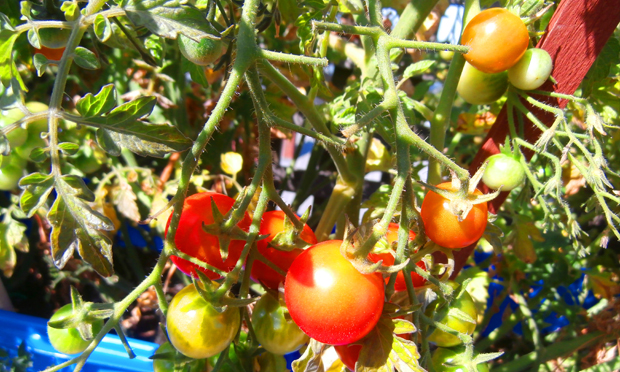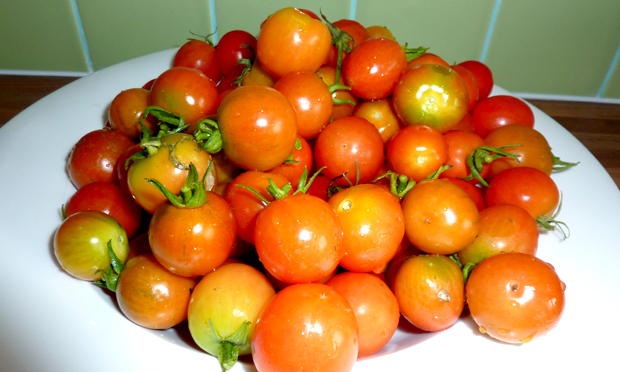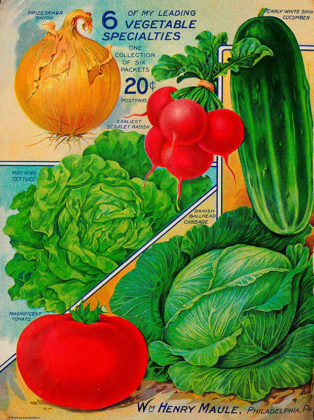The red tide: a tomato tour from Naples to Stoke Newington

Tomatoes on the vine.
You can see the red, green and white of Italy’s national colours in the pizza made with tomato, basil and mozzarella, named after Queen Margherita, who was captivated by it on a visit to Naples in 1889. She and her husband King Umberto were there on a charm offensive, to consolidate the newly acquired unity of the country, little knowing that this humble street food would go on to captivate the rest of the world, becoming a symbol of Italy.
The red of the tomato is perhaps the defining colour of Italian cuisine today. It was also the colour of the shirts of Garibaldi’s army, which helped achieve that unity, a reminder of his comrades recruited from the slaughterhouses of the Argentinian beef industry, where they wore protective garments that mitigated the horrors of the job.
It’s hard to imagine the food of Italy without tomatoes, but in the centuries of fine cooking that preceded their arrival, after the discovery of the New World in the late fifteenth century, Italian gastronomy was famous throughout Europe. So what did tomatoes have to add? Precious little according to some, who like Elizabeth David, poured scorn on the red tide of crude colour and all-pervasive flavour that has in many ways coarsened this subtle cuisine. Ingredients that can speak for themselves are often drowned in a flood of over-assertive tomato, that comes cheaply, as a paste or purée, tinned pulp or whole fruit (yes, botanically speaking it’s a fruit not a vegetable), or sun-dried.
What do we get from tomatoes that can’t be got elsewhere? A sharp sweet fruitiness, which in the past used to come from a squeeze of unripe grapes (verjuice), gooseberries, pomegranate juice, lemon or bitter orange juice, dry white wine, or a bitter, acidic herb like sorrel, and an additional oomph from umami, sometimes called the fifth taste (more on that in next month’s Citizen), which properly used tomatoes can give us, more as flavour enhancer than bulky ingredient. So let’s go for the fruitiness, and keep tomatoes for what they do best, bringing out other flavours rather than drowning them.
We like to think of sweet old grannies in sprigged aprons lovingly preparing homemade bottled tomatoes and purée, and there are a lot of them about, but in reality commercial tomato products are a major industry, a huge chunk of Italy’s economy, as David Gentilcore tells in his gripping Pomodoro! A History of the Tomato in Italy, and a huge factor in the cooking of other nations too.

A pasta recipe, All’Amatriciana, is a delicious combination of tomato and other flavours. It’s based on ‘cinque P’, five P’s: pasta, pancetta, pomodoro, pecorino and peperoncino. A tasty version involves serving the pasta, spaghetti in this case, with a sauce made by frying some pancetta cut into small pieces until crisp in a very little olive oil, you put these aside and cook some garlic in the oil and fat until golden, than add a little dried chilli to taste (I use Chinese Facing Heaven chillies, taking care not to burn them which would make them bitter), then chucking in some chopped fresh tomato, not too much, and quickly cooking it down. Serve this on your cooked and strained pasta, with some grated pecorino or parmesan, and the crisp bacon pieces.
What makes this dish for me is the home-cured bacon of Meat N16 in Stoke Newington Church Street which I use instead of pancetta. It’s made from some of their free-range pork, nice and fatty, salted for only few days, then lightly smoked.
And the tomato needs to be tasty too; it’s worth paying a bit more for a heritage/heirloom tomato, rather than the watery, insipid little supermarket beauties, bred for appearance and shelf life rather than flavour. If you look up commercial tomato sites on the web, there are awesome statistics covering every aspect of the mass production of this nice little earner except flavour, whereas on the Isle of Wight site every other word is flavour, with poetic images of pleasingly irregular multi-coloured specimens.
Hackney citizens are fortunate in being able to get these and other organic tomatoes in its many farmers’ markets and whole food stores. They are so good to eat that all you need is salt and a generous splosh of olive oil (don’t ever try to ‘drizzle’ the stuff, a meteorological misnomer if ever there was one); then if you add some chopped garlic and a few basil leaves you have Italian patriotism on a plate and a nice lunch, along with a bit of cheese and some bread, for less than a quid, whereas a cheap pizza, made with inferior ingredients, would set you back many times more.
If you want to experience Italian pasta without tomatoes try the now trendy carbonara, using this time not bacon but guanciale, cured but not smoked pork cheek, which gives up lots of gently flavoured fat in which you toss the cooked and drained spaghetti together with one beaten egg per person, and generous amounts of parmesan. The trick, as some of our best recipe writers have told us (especially in the Guardian), is to reserve a cup of the well-salted cooking water from the pasta and add it in small amounts as you rapidly stir in the egg, so that the sauce goes all creamy, and doesn’t curdle. With all that bacon fat the one thing you don’t need is cream as well. This is a subtle dish, where the pasta is not overcome by the sauce, and you get to enjoy its taste and texture, as well as the smooth coating.
Way back in the 1460s Maestro Martino, cook to popes and cardinals in Rome, made his Chicken with verjuice (see Hackney Citizen, September 2013) using sour grapes to get a nice fruity tang to some chicken joints fried with chopped bacon and finished with a sprinkling of fresh herbs. If you substitute tomato for the grapes you get Pollo alla Cacciatora, which in spite of the pundits I see as fried chicken, with the addition of chopped bacon and vegetables, including tomatoes to give that sweet fruitiness we mentioned, and a splash of wine tossed in at the end, and reduced quickly to a concentrated dry braise, not a stew.

The magic combination of tomatoes and bread lurks in fond memories of the soggy tomato sandwiches of childhood picnics, which should have been horrible but were blissful. There is something about the way moistened stale bread (if it is good bread to start off with) combines with tasty tomatoes and a few basic seasonings like salt, oil and vinegar, to create a new taste sensation. The pundits don’t say why or how this happens. Harold McGee’s On Food and Cooking, the Science and Lore of the Kitchen explains most of the physics and chemistry of food, but not this. It looks as if a very happy relationship between the enzymes that make stale bread a good vehicle for liquid things (somehow it doesn’t get soggy) and those that give ripe tomatoes their tastiness, creates a magical mixture of textures and flavours that can be found in panzanella, a salad based on tomatoes and stale bread, (see Hackney Citizen, August 2014) and the Spanish pan con tomates.
Here the simplest possible combination of ingredients creates one of the best and most basic items of Hackney’s many tapas bars; that at Escocesa in Stoke Newington Church Street is lovely. The good bread keeps its bite, while the garlic rubbed into it when toasted, combines with the fresh tomato, salt and plentiful olive oil, left to rest a few minutes, to give a savoury mouthful that is both soft and crunchy at the same time. Gazpacho is an extension of this; chopped tomato, garlic, and whatever stuff comes to hand (onion, cucumber …), together with grated stale bread, seasoned with salt and augmented with good olive oil, somehow creates a mixture that is more than the sum of its parts. It can be whizzed up in a blender, or pounded by hand in a pestle and mortar to get a rougher texture, and of course the seasonings are up to you, but it is those mysterious enzymes that do the trick.
